Outstanding white barring and a finely flecked head stand out in contrast to a bright red cap!
Meet The White-barred Piculet
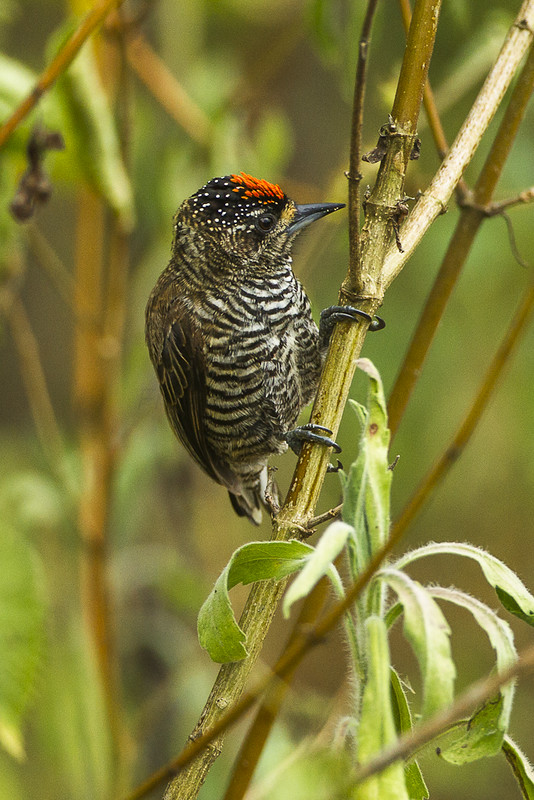
Photo Courtesy of Francesco Veronesi / CC BY-SA 2.0
The white-barred piculet (Picumnus cirratus) measures between 9 and 10cm (3.5 and 3.9 inches) long. Males of this species have red streaks or a red patch on their fore-crown. The rest of his crown is black, flecked with white, while the upper parts of the body are olive-brown, finely barred with white. His main flight feathers are brown. Ear coverts and cheeks are olive brown and there is a white streak just above toward the rear of the eyes. His lower cheeks, chin, and throat are white with some faintly barred black. His underparts are white, boldly barred with black with the broadest stripes being on the belly and flanks. His tail is brown with the central pair of feathers which are white. His iris’s are brown, the orbital is blueish-gray.
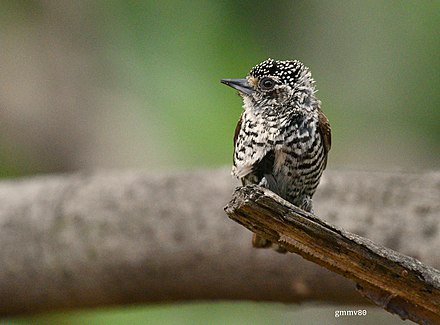
Photo Courtesy of Gmmv1980 / CC BY-SA 4.0
The beak is black his legs are gray.
The male and female look quite similar, the main difference being she lacks the red patch on the fore-crown.
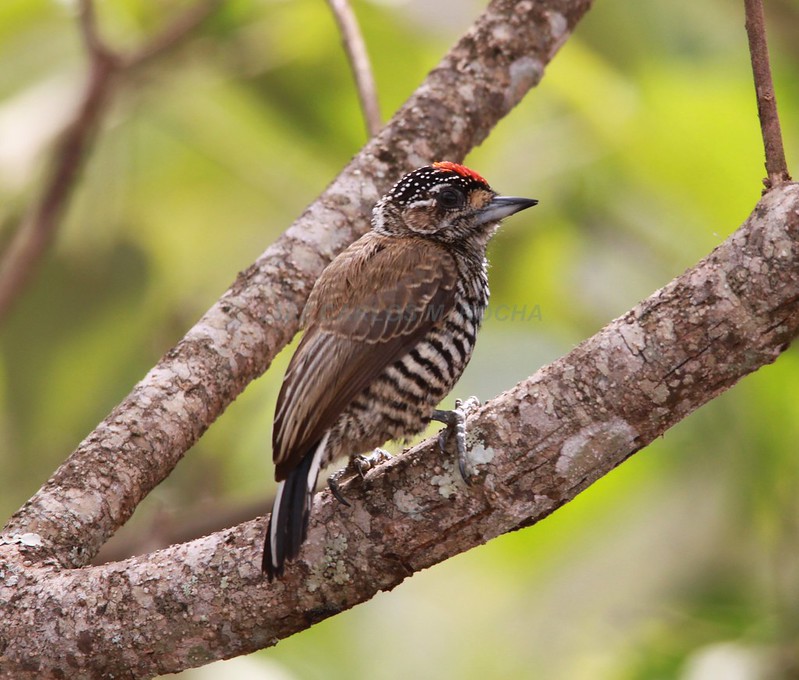
Photo Courtesy of Luiz Carlos Rocha / CC BY-SA 2.0
This bird is found in south-eastern Brazil south and west through to the Pantanal into south-eastern Bolivia, Paraguay, and northern Argentina. A small, apparently isolated population is found in southern Guyana and adjacent Roraima.

These birds prefer living in and around subtropical or tropical dry forests, subtropical or tropical moist lowland forests, and dry savannahs. It hybridizes with the white-barred piculet where their ranges overlap.
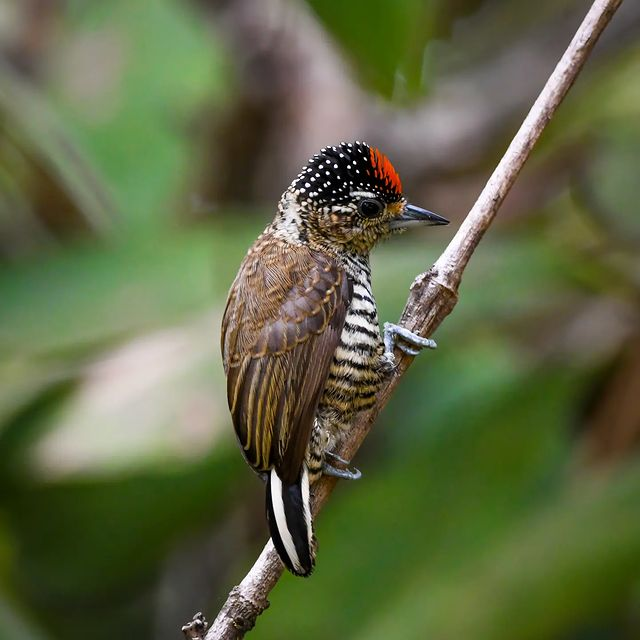
The white-barred piculet usually looks for food on its own but may join small mixed species flocks. It likes to dine on ants, their larvae and eggs, beetle larvae, and other small invertebrates. It actively drills holes in wood and may also feed on the sap that oozes from puncture marks. It has also been known to follow swarming ants.
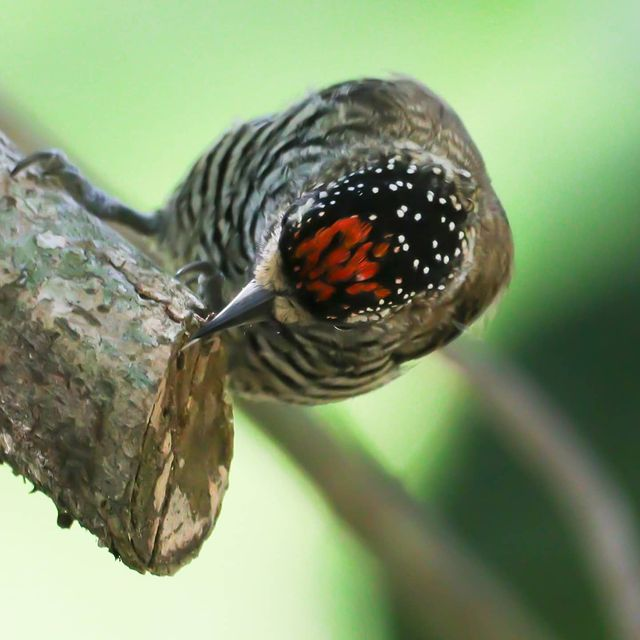
As far as breeding goes these birds build nests between July and December for Northern birds and September through to March for Southern birds. Both sexes dig nest holes in soft wood between 2 to 6 meters above the ground. The female lays 2 to 4 eggs within.
This bird has a very large range and is described as being common.
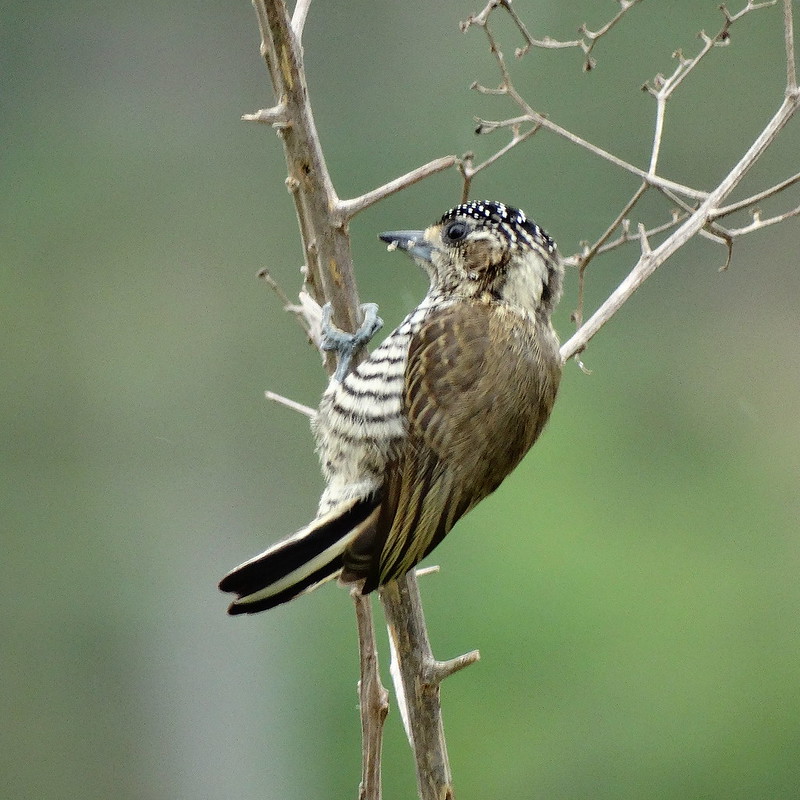
Photo Courtesy of Under the same moon / CC BY 2.0
You can watch this bird right here in the video below:




